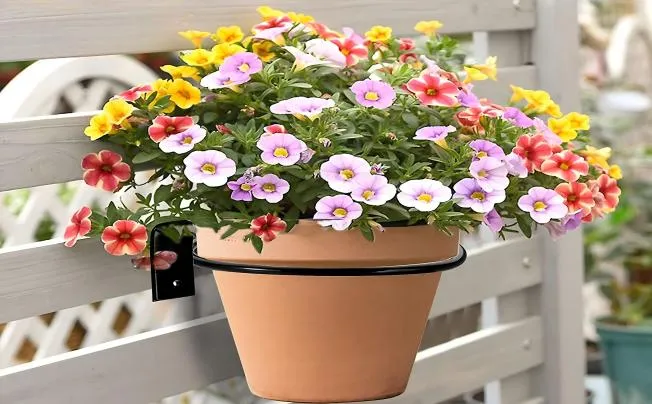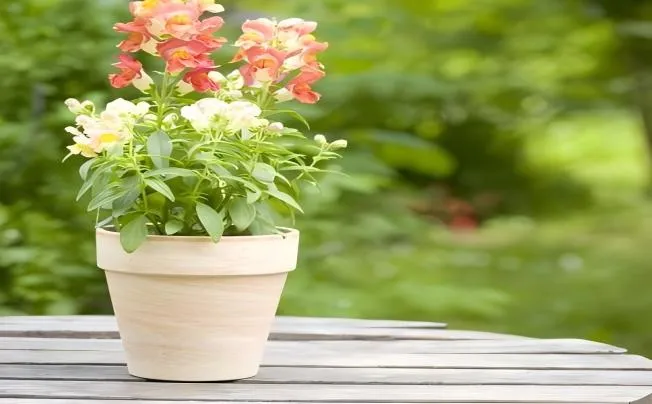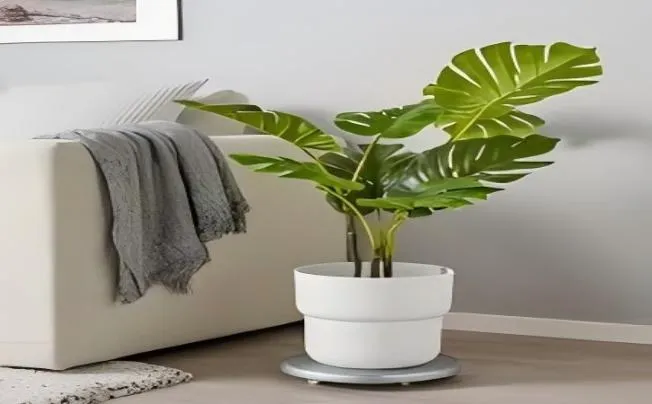What Are The Alternatives To Plastic Plant Pots?
When it came to gardening, flower lovers used to favour plastic flower pots. However, their drawbacks have been increasingly apparent as environmental consciousness has grown and as plant growth has been thoroughly studied.
An environmentally friendly and practical alternative
1. Flower containers made of clay
The main characteristics of clay flower pots, which are composed of baked clay, are their excellent moisture retention and air permeability. In addition to absorbing and retaining the ideal quantity of water to keep the soil from becoming overly dry or soggy, clay's porous nature permits air to flow freely, giving plant roots enough oxygen. This creates a healthy environment for plant roots to flourish. Additionally, clay flower pots have a straightforward, organic appearance that blends well with a variety of interior design themes. Nevertheless, clay flower pots need to be inspected and maintained frequently because they are somewhat heavy, difficult to transport, and may weather after prolonged usage.
2. Flower containers made of ceramic
High temperatures are used to fire ceramic flower pots, which have delicate, smooth surfaces, a wide range of vibrant colours, and beautiful patterns that can give flowers a distinctive artistic look. Ceramic flower pots have a long lifespan and don't need to be replaced very often because they are resistant to wear and corrosion. Nevertheless, the air permeability of ceramic flower pots is low. This issue can be resolved by adding a layer of broken tiles or ceramsite to the flower pot's bottom to improve air permeability and drainage; using loose, breathable soil can also help the flower pot's air circulation.

3. Flower containers made of wood
Wooden flower pots are made of a natural, eco-friendly material that is safe for both the environment and plants. Additionally, wood has a specific air permeability that helps plant roots breathe. Wooden flower containers can have certain drawbacks, though. It needs routine maintenance, such as applying waterproof paint and preventing prolonged contact with water, because it is easily deformed and rotted by moisture. It is appropriate to put certain plants, such succulents and cactus, that don't need a lot of humidity. They can last longer if placed indoors in an area with good ventilation or outdoors in a balcony or courtyard with rain shelters.
4. Flower containers made of cement
Cement flower pots have gained popularity in recent years due to their distinctive industrial design and strong, long-lasting qualities. It is suited for planting huge plants, has a hard texture, strong stability, can support great weight, and is difficult to damage. Its distinctive colour and rough texture give off a sleek and understated industrial vibe that goes well with Nordic, modern, and other home design themes. But in addition to being heavy and challenging to move, cement flower pots have poor air permeability, which makes it difficult for plant roots to breathe. In terms of applicable scenarios, cement flower pots are frequently used in outdoor gardens and courtyards as containers for large landscape plants, displaying a unique decorative effect. To improve air permeability, some small holes can be reserved on the flower pot's wall during production, or more breathable materials like expanded clay and coconut coir can be laid on the pot's bottom during planting.
5. Flower containers that decompose
The natural degradable materials used to make degradable flower pots, like bamboo pulp and fibre, can break down over time in the natural environment, thereby lessening the environmental impact. Additionally, biodegradable flower pots can meet the air requirements of plant growth due to their high air permeability. Furthermore, many biodegradable flower containers supplement the nutrients required for plant development. These nutrients will be progressively released into the soil as the flower pots decompose, giving the plants nourishment. There are already an increasing number of different kinds and designs of biodegradable flower pots available. A appropriate biodegradable flower pot is available for both huge flowers and green plants as well as miniature succulents.

How to choose the right replacement flower pot for you?
How do you choose the best flower pot for yourself when there are so many options available? This necessitates careful evaluation of numerous aspects.
Flower pot requirements vary depending on the type of plant. Succulents require flower pots with exceptional air permeability, such clay flower pots, because they are resistant to drought and fear waterlogging. Because they prefer damp conditions, ferns don't need much air permeability, and they can flourish in ceramic or plastic flower pots that have better air permeability. Therefore, make sure you have a thorough understanding of the plant's growth habits before selecting a flower pot.
It is important to consider environmental influences. The arrangement of the flower pot and the interior design should be taken into account while cultivating flowers indoors. If you plant flower pots in an outdoor garden, you should think about their weather resistance and durability. The natural warmth of wooden flower pots and the exquisite elegance of ceramic flower pots can create a distinctive decorative effect in the interior. Degradable flower pots are eco-friendly and can be incorporated into the natural surroundings, while cement flower pots are robust and long-lasting.
All of them are wise decisions.
Budget and personal preferences are equally significant. Cement flower pots and contemporary ceramic flower pots can appeal to you more if you value simplicity and design, while wooden and clay flower pots will be more in keeping with your aesthetic if you like a more natural look. When it comes to cost, ceramic and biodegradable flower pots are more costly, plastic flower pots are more affordable, and the cost of clay and wooden flower pots varies based on craftsmanship and quality. You can make a decision based on your personal financial circumstances.

Selected Blogs
-
What customization services are available for metalworking customization?
2024-12-12
-
What Is The Difference Between A Plant Container And A Raised Bed?
2024-04-23
-
Garden Screening & Fence Panels
2024-04-23
-
Gardening pot selection tips
2024-04-17
-
The function and collocation of horticultural fire pot
2024-04-17


